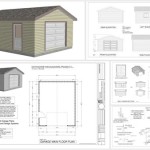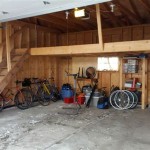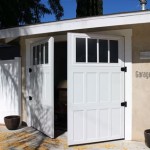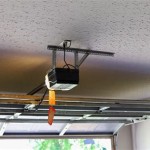How To Cool Your Garage In Florida
Florida's climate presents unique challenges for homeowners, particularly when it comes to maintaining comfortable temperatures in spaces that aren't always prioritized during home construction. Garages, often used for storage, workshops, or even recreational areas, can become unbearably hot during the summer months, making them unpleasant and potentially damaging to stored items. Effectively cooling a garage in Florida requires a multifaceted approach that considers insulation, ventilation, and active cooling methods. This article outlines proven strategies for lowering the temperature in your Florida garage, making it a more usable and comfortable space.
Understanding the Problem: Heat Gain in Garages
The intense Florida sun is the primary contributor to elevated garage temperatures. Solar radiation penetrates the roof and walls, heating the building materials. Dark-colored roofs and walls absorb more heat than lighter shades, exacerbating the problem. Insufficient insulation in the roof and walls allows this heat to radiate directly into the garage. Concrete floors, while durable, also absorb and radiate heat. Furthermore, garage doors are often poorly insulated or uninsulated, providing minimal resistance to heat transfer. Inadequate ventilation traps the hot air inside, preventing natural cooling through air circulation. The combination of these factors creates a significant buildup of heat, leading to uncomfortably high temperatures.
Heat gain can also be influenced by the orientation of the garage. Garages facing south or west will typically experience greater heat exposure during the hottest part of the day. The type of materials used in construction also plays a role. Metal garage doors, for example, will heat up more quickly than wood or insulated doors. Finally, activities conducted inside the garage, such as running power tools or storing heat-generating equipment, can add to the overall heat load.
Improving Insulation for Effective Temperature Control
Insulation is a critical component in regulating the temperature inside a garage. It acts as a barrier, reducing the transfer of heat into the space during the summer and preventing heat from escaping during the winter (though the latter is less of a concern in Florida). Insulating the garage door, walls, and ceiling can significantly lower the temperature and make the space more comfortable.
Garage Door Insulation: Garage doors are often the weakest link in terms of insulation. Numerous options are available for insulating a garage door, including DIY kits containing pre-cut panels of rigid foam insulation that can be easily installed. Reflective insulation, such as radiant barrier materials, can also be affixed to the door to reflect solar radiation. Consider the R-value (resistance to heat flow) of the insulation when making a selection. A higher R-value indicates better insulation performance. Choosing an insulated garage door from the outset is generally the most effective solution, although retrofitting existing doors is a viable option.
Wall Insulation: If the garage walls are not already insulated, adding insulation can make a substantial difference. Fiberglass batt insulation is a common and relatively inexpensive option, but it requires careful installation to avoid gaps and compressed areas, which can reduce its effectiveness. Spray foam insulation provides a better seal and higher R-value, but it is typically more expensive and requires professional installation. Rigid foam board insulation can also be used, particularly for concrete block walls. Ensure that all insulation materials are properly installed and covered to prevent moisture damage and maintain their effectiveness.
Ceiling Insulation: Insulating the garage ceiling is particularly important, as heat rises. Blown-in insulation, such as cellulose or fiberglass, is a cost-effective option for insulating attic spaces above the garage. Batt insulation can also be used, but it may be more difficult to install in tight spaces. Consider the R-value appropriate for your climate zone. Consult with a professional if you are unsure about the best insulation type or installation method for your garage.
Optimizing Ventilation for Natural Cooling
Proper ventilation is essential for removing hot air and allowing cooler air to circulate throughout the garage. Natural ventilation relies on the movement of air through open doors, windows, and vents. Mechanical ventilation uses fans to actively circulate air and exhaust hot air. A combination of both natural and mechanical ventilation is often the most effective approach.
Passive Ventilation Strategies: Simply opening the garage door during cooler parts of the day can significantly improve ventilation. However, this may not always be practical or secure. Installing screened windows or vents can allow for continuous airflow while keeping insects out. Consider adding a ridge vent along the peak of the roof to allow hot air to escape. Soffit vents, located under the eaves, allow cooler air to enter the garage, creating a natural convection current. The placement of vents is crucial for effective ventilation; ensure that vents are positioned to maximize airflow throughout the space.
Mechanical Ventilation Systems: Exhaust fans can be used to actively remove hot air from the garage. A whole-house fan, installed in the ceiling, can effectively exhaust hot air into the attic space. However, ensure that the attic is adequately vented to prevent the buildup of heat and moisture. Window fans or portable fans can also be used to circulate air within the garage. Consider installing a ceiling fan to create a breeze and improve air circulation. For larger garages or workshops, a more powerful exhaust fan may be necessary to effectively remove hot air. Timers or thermostats can be used to automatically control the fans, ensuring that they operate only when needed.
Consider a Mini-Split System: For those seeking a more controlled and consistent temperature, a ductless mini-split system can be a viable option. These systems offer both cooling and heating capabilities, providing year-round climate control. Mini-split systems are energy-efficient and relatively easy to install, requiring only a small hole in the wall for the refrigerant lines. They also offer individual zone control, allowing you to adjust the temperature in the garage independently of the rest of the house. While the initial investment may be higher than other cooling methods, the long-term benefits of improved comfort and energy efficiency can make it a worthwhile investment.
Additional Strategies for Reducing Heat
Beyond insulation and ventilation, several other strategies can help to reduce heat buildup in the garage. These include reflective coatings, landscaping, and managing heat-generating activities.
Reflective Coatings: Applying a reflective coating to the garage roof can significantly reduce the amount of solar radiation absorbed. These coatings, typically made of a white or light-colored material, reflect sunlight away from the roof, reducing the heat transfer into the garage. Reflective coatings are particularly effective for metal roofs, which tend to absorb a significant amount of heat. These coatings can be applied by a professional or as a DIY project. Ensure that the roof is clean and properly prepared before applying the coating.
Strategic Landscaping: Planting trees or shrubs around the garage can provide shade, reducing the amount of direct sunlight that reaches the walls and roof. Deciduous trees are particularly effective, as they provide shade during the summer months and allow sunlight to penetrate during the winter. Consider the size and location of the trees to ensure that they provide adequate shade without blocking ventilation or causing damage to the structure. Vines can also be grown on trellises along the walls to provide shading and insulation.
Managing Heat-Generating Activities: Limit activities that generate heat inside the garage, such as using power tools or running appliances. If these activities are unavoidable, consider performing them during cooler parts of the day or in a well-ventilated area. Insulate or shield heat-generating equipment to prevent it from radiating heat into the garage. Consider moving heat-generating equipment to a different location, if possible. Furthermore, examine stored goods. Are there items that may be contributing to the heat? Hazardous storage of chemicals in intense heat, for example, may become unsafe.
By implementing a combination of these strategies, homeowners in Florida can effectively cool their garages and create a more comfortable and usable space. The specific approach will depend on individual needs, budget, and the characteristics of the garage. Careful planning and attention to detail are essential for achieving optimal results. Regular maintenance of insulation, ventilation systems, and reflective coatings will ensure that these strategies continue to be effective over time.

Keeping Your Garage Cool This Summer In Florida

How To Keep A Garage Cool In Arizona Florida Ae

How To Keep A Garage Cool In Arizona Florida Ae

How To Keep Your Garage Cool In Florida Adco Doors

How To Cool A Garage Fast

How To Keep A Garage Cool In Florida Ventilation Tips More

Garage Cooling Solutions 9 Tips To Help You Beat The Heat

Top 3 Ways To Keep Your Garage Cool This Summer

How To Keep Your Garage Cool In Florida Mo Better

Keeping Your Garage Cool This Summer In Florida








